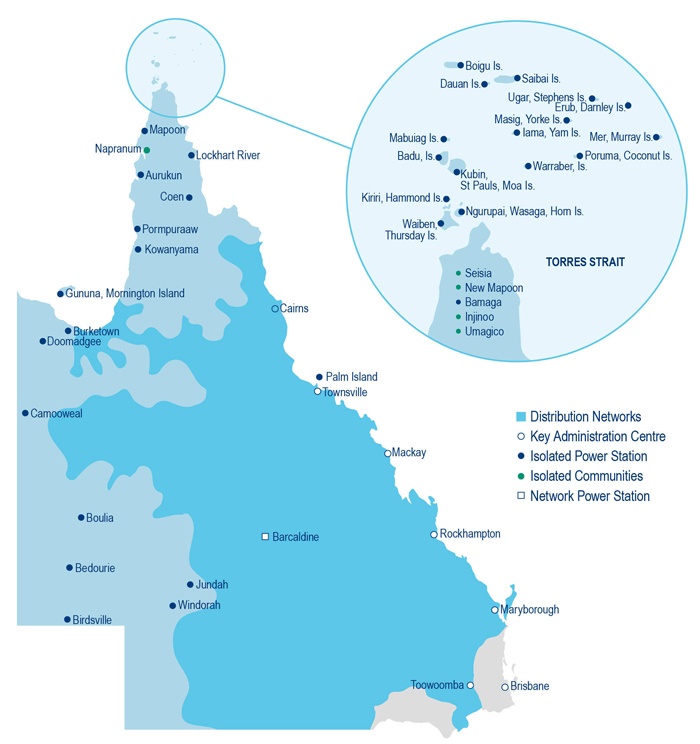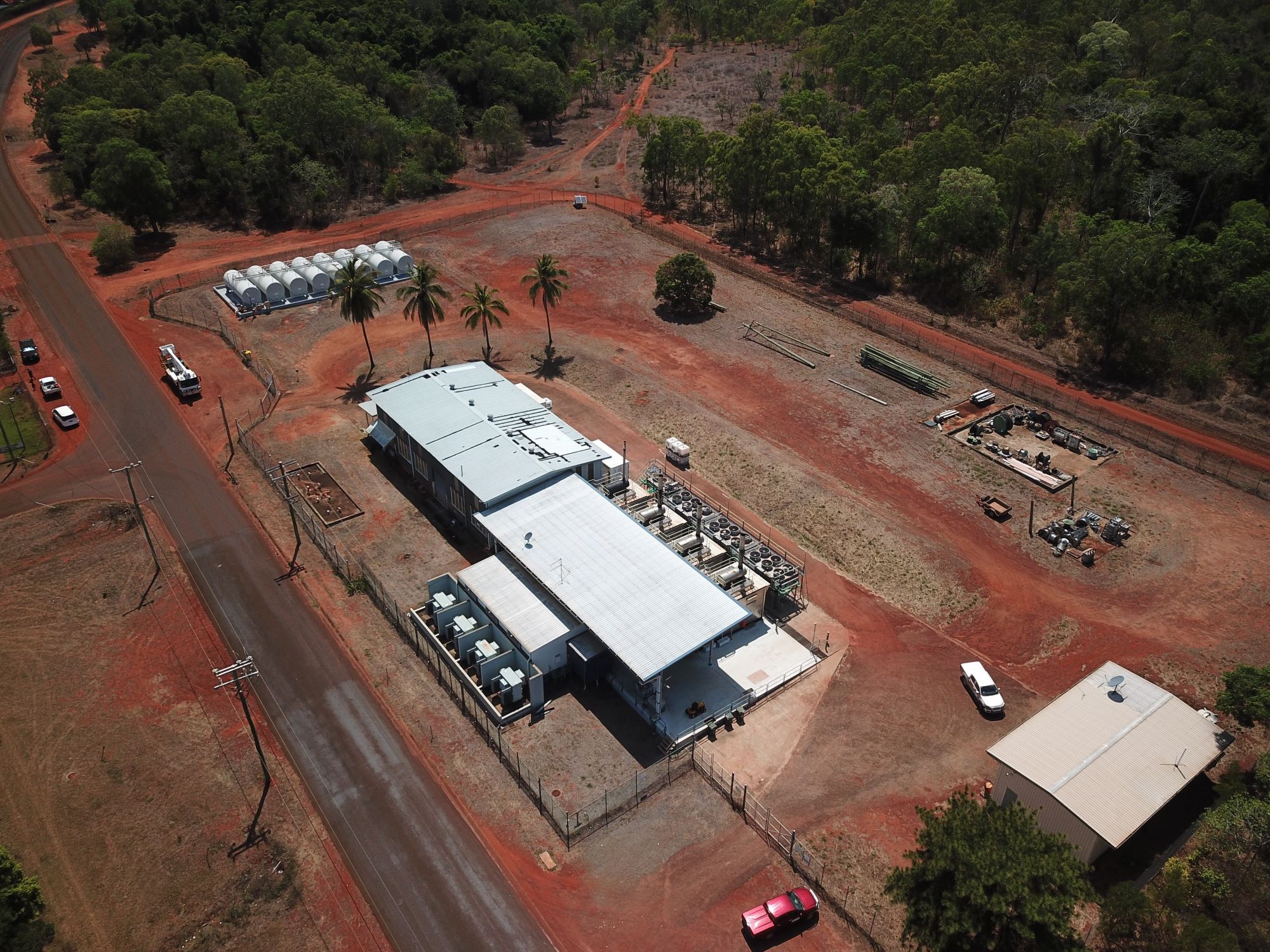Isolated & remote power stations
We own and operate 33 isolated power stations, with stand-alone electricity networks, that supply communities too remote to connect to the national grid.
These stand-alone micro-grids supply 39 communities throughout western Queensland, the Gulf of Carpentaria, Cape York, on numerous Torres Strait Islands, and on Palm and Mornington Islands.

As highlighted in the map above, the parts of Queensland that are too remote to connect to the national electricity grid include:
- Aurukun
- Bamaga
- Bedourie
- Birdsville
- Boulia
- Burketown
- Camooweal
- Coen
- Doomadgee
- Jundah
- Kowanyama
- Lockhart River
- Mapoon
- Mornington Island
- Napranum
- Palm Island
- Pormpuraaw
- Thursday Island & surrounding islands
- Windorah
Our Isolated Networks Strategy
We are outworking our Networks Strategy to transition to renewable energy in these communities by enabling, predominantly, customer or community-owned and operated renewable generation.
The isolated networks have been traditionally powered by centralised diesel power stations with an installed capacity of 46MW. These networks are rapidly transitioning to increase renewable energy supply, with an installed capacity of 1MW of Ergon Energy-owned renewable energy resources and 4MW of customer-owned distributed solar energy installations.
The stand-alone networks consist of power stations, high voltage feeders, SWER (Single Wire Earth Return) and low voltage distribution networks, with maximum demands ranging from 68kW at Stephens Island up to 4.2MW at Thursday Island. The annual energy demand across the sites ranges from 425MWh (Stephen’s Island) to 3.1GWh (Thursday Island).
Our objectives
We are supporting positive outcomes for each community with the following five objectives:
- Reduction in consumption of imported fossil fuel
- Enablement of a customer and community led transition to renewable energy
- Providing economic benefit
- Increase in opportunities in communities
- Mitigation of asset and fuel-related risk.
Our Ambition Statement: “To support community development and participation in renewable energy supply while providing safe, sustainable, cost effective and reliable networks."
The Isolated Networks Ambition Statement for 2030 and our strategic path, aligns to our Environmental Sustainability and Cultural Heritage Policy (PDF 1.6 mb).

